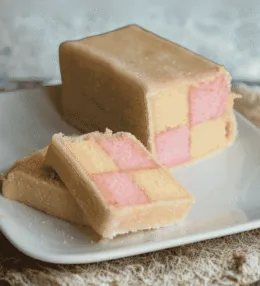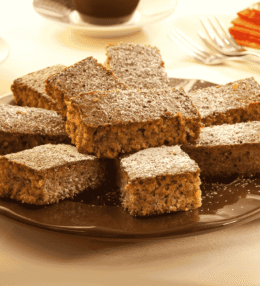
- View
Table of Contents
ToggleKare Raisu, or Japanese Curry Rice, is one of Japan’s most beloved comfort foods. Unlike the fiery curries found in South Asia, Japanese curry is mild, slightly sweet, and thick, offering a rich, comforting experience in every bite.
Served over a bed of fluffy rice, Kare Raisu has become a household favourite in Japan, appreciated for its satisfying flavours and its ability to warm the soul, particularly on cold days.
Want to dive deeper into Japanese Cuisine? Don’t miss our post on 26 Traditional Japanese Foods to Try
What Is Kare Raisu?
Kare Raisu is a dish that consists of a flavourful curry sauce poured over rice, often accompanied by tender chunks of meat and vegetables.
While the word “curry” may evoke images of complex spices and heat, Japanese curry is uniquely mellow. It’s typically made using a curry roux, which gives the sauce its signature thick texture and mild spice.
The sauce is slow cooked with vegetables like carrots, onions, and potatoes, along with meat, commonly chicken, pork, or beef, until all the ingredients become tender and infused with the fragrant sauce. What makes Kare Raisu so appealing is its balance of flavours.
The savoury richness of the curry sauce is complemented by subtle sweetness, often from ingredients like apples or honey, and the dish has just enough spice to keep things interesting without overwhelming the palate.
It’s the kind of meal that feels instantly comforting, perfect for both weeknight dinners and gatherings with friends.
Ingredients and Taste
The ingredients in Kare Raisu are simple yet come together in a wonderfully complex way. The base of the dish is the curry roux, a mixture of curry powder, flour, and oil that thickens the sauce.
From there, common ingredients include onions, carrots, and potatoes, which add sweetness and texture to the dish. The choice of meat can vary, but chicken, beef, and pork are the most popular options.
Some variations of Kare Raisu also include additional touches like grated apple or honey, which add a hint of sweetness that balances the savoury curry. The flavour of Japanese curry is unlike any other, it’s rich and savoury, but with a gentle sweetness and very mild heat.
The texture is thick and velvety, thanks to the roux, and it coats the vegetables and meat in a way that makes every bite satisfying. The rice provides a perfect counterbalance, soaking up the sauce while offering a soft and neutral backdrop to the bold flavours of the curry.
Served with a side of pickles, known as fukujinzuke, Kare Raisu is a dish that hits all the right notes, hearty, comforting, and deeply flavourful.
A Taste of History
Kare Raisu has an interesting history that highlights Japan’s ability to adapt foreign influences into its own culinary traditions. The dish was introduced to Japan by the British during the Meiji era (late 19th to early 20th century), when Japan began opening its doors to Western influences.
British style curry, which had itself been adapted from Indian cuisine during colonial rule, made its way to Japan and was quickly embraced by locals. Over time, the Japanese put their own spin on the dish, creating a milder, thicker version that suited their palate.
By the mid-20th century, instant curry roux became widely available in Japan, making Kare Raisu an easy and accessible meal for busy households. The dish became a staple in school lunches and home kitchens alike, growing in popularity across the country.
Today, Kare Raisu is more than just a meal, it’s a reflection of Japan’s culinary ingenuity and its ability to turn a foreign dish into something uniquely Japanese.

Kare Raisu (Japanese Curry Rice)
Ingredients
- 500 g beef chicken, or pork (cut into bite-sized pieces)
- 2 medium onions sliced
- 2 medium carrots sliced
- 2 medium potatoes peeled and cubed
- 2 tbsp vegetable oil
- 3 cloves garlic minced
- 1 tsp grated ginger
- 4 cups water or chicken broth
- 1 apple grated (optional for sweetness)
- 1 package 100g Japanese curry roux blocks
- 2 cups cooked Japanese short-grain rice
- Pickled ginger beni shoga and fukujinzuke (pickled vegetables) for garnish (optional)
Instructions
- Begin by heating a large pot over medium heat. Add 2 tablespoons of vegetable oil. Once the oil is hot, sauté the sliced onions for about 5 minutes, until they become translucent and slightly golden. Stir frequently to prevent burning.
- Add the minced garlic and grated ginger to the onions, cooking for another 1-2 minutes until fragrant. These ingredients form the base of the curry’s rich flavour.
- Add the beef, chicken, or pork to the pot. Stir well and cook until the meat is browned on all sides, which will take about 5-6 minutes. This step locks in the meat's juices and intensifies the flavour of the curry.
- Next, add the carrots and potatoes to the pot. Stir everything together, then pour in the 4 cups of water or chicken broth. Bring the mixture to a boil, then reduce the heat to low and simmer for 15-20 minutes, until the vegetables become tender.
- Once the vegetables are soft, grate the apple directly into the pot (if using). This adds a subtle sweetness and balances the spiciness of the curry. Stir well to combine.
- Break the curry roux blocks into smaller pieces and add them to the pot. Stir continuously until the roux has completely dissolved into the broth, forming a thick, smooth sauce. This will take about 3-4 minutes.
- Let the curry simmer on low heat for another 10 minutes to allow the flavors to meld together. Stir occasionally to ensure the sauce doesn’t stick to the bottom. If the sauce becomes too thick, you can add a bit more water to reach the desired consistency.
- Serve the curry over freshly cooked Japanese short-grain rice. Garnish with pickled ginger or fukujinzuke on the side for added texture and flavour contrast. Japanese curry rice is best enjoyed hot, with a rich, savoury sweet sauce coating the tender vegetables and meat.






